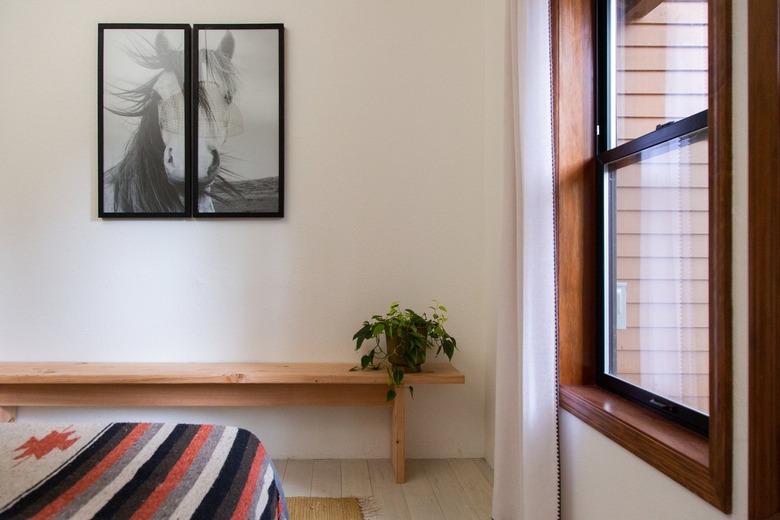How To Calculate The Proper Height For Hanging Pictures On Your Wall
We may receive a commission on purchases made from links.
There's something about hanging pictures on the wall that's strangely daunting. If you hang something too low or hang it crooked, it's going to look wrong every time you walk into the room. And you don't want to put any more holes in the walls than necessary, so you need to get it right the first time. It becomes much easier to hang pictures and mirrors on walls once you know the magic number: 57.
The Standard Height for Hanging Pictures
The Standard Height for Hanging Pictures
You might have to do a little basic math when you're hanging art, but these are seriously simple calculations. The key is to know the 57-inch rule — that is, the center of your artwork should be positioned 57 inches above the floor. It's the perfect eye-level height for most adults to admire art, which is why galleries often use the 57-inch rule when mounting pieces.
When you're measuring where the top of a piece of art should sit, the picture-hanging-height formula is 57 plus half of the total height of your artwork. For example, say you're hanging a picture in a frame that's 16 inches tall. Add 8 (16 divided by 2) to 57 to get 65. The top of the frame should be hung 65 inches above the floor.
Spacing becomes more complicated if you're creating a gallery wall of multiple pieces. Start by hanging the largest piece so its center is at 57 inches and then arrange everything else around it. Leave 3 to 6 inches of space between the pieces.
To plot out how you're going to hang everything before putting holes in the wall, use a picture-spacing calculator online. Input measurements for your wall space and the pieces you want to hang and the calculator will tell you exactly how much space to leave between pieces so your finished gallery wall looks balanced.
Exceptions to the Rule
Exceptions to the Rule
The 57-inch rule doesn't apply in every case, like when you're hanging a picture over a sofa, over a mantel, or over another piece of furniture. In these cases, hang a picture so the bottom of the frame is 6 to 8 inches above the sofa or mantel. This may put your artwork well above eye level, but the room will look balanced.
You may also want to ignore the 57-inch rule if you have very high ceilings. If you're going to hang one big piece of art on a wall in a room with a 10- or 12-foot ceiling, you might want to center the piece at 60 inches or even higher.
Easiest Ways to Hang Pictures on Walls
Easiest Ways to Hang Pictures on Walls
Mounting your artwork tends to be easiest when you have a picture-hanging kit that includes a variety of fasteners and a bubble level so you can make sure you hang things perfectly straight. Depending on the type you buy, you may be able to use a picture-hanging kit to physically hook the frame onto the wall fasteners, which tends to be one of the most difficult parts of hanging art.
Using picture-hanging strips allows for hanging pictures without nails and lets you anchor all four corners of the piece to the wall. The downside to these strips is that even the largest size can't support artwork that weighs more than 15 pounds or so. Choose heavy-duty picture hangers to display anything that's unusually heavy; these hangers can support up to 100 pounds.
